There can be your advertisement
300x150
Wall Finishing Options in Apartment
Designers select wall finishing options individually for each room. It's hard to imagine ceramic tiles on the walls of a cozy bedroom or paper wallpapers in the bathroom.
The right choice depends on the taste of the homeowners, interior style, and, of course, individual characteristics of the finishing. We will explore this in the article.
Criteria for Selecting Finishing
- Eco-friendliness. If the material is toxic, it is dangerous for the health of residents.
- absence of allergies to substances from which the finishing materials are made.
- Cost — this is a subjective factor, depends on the possibilities of each person.
- Application technology — sometimes the mounting method is labor-intensive and costs more than the material itself.
- Finishing characteristics (thermal and moisture resistance, ease of maintenance, aesthetics) — depending on which room the renovation is done in, all characteristics of the cladding must be taken into account.
- Interior matching — color, textures are selected to match the intended design, purchased furniture if it already exists and existing accessories.
 Design: Anna Mozharo
Design: Anna MozharoTypes of Finishing
- Wallpaper
There are many types, textures, colors, and a wide price range — these are some reasons for the popularity of wallpapers. Budget finishing often uses wallpapers.
Besides price, advantages include: a huge range of products (all popular types are described below), and ease of application — almost anyone can apply wallpapers by themselves, without professional help.
There are several characteristics by which to choose wallpapers. These include moisture resistance and materials.
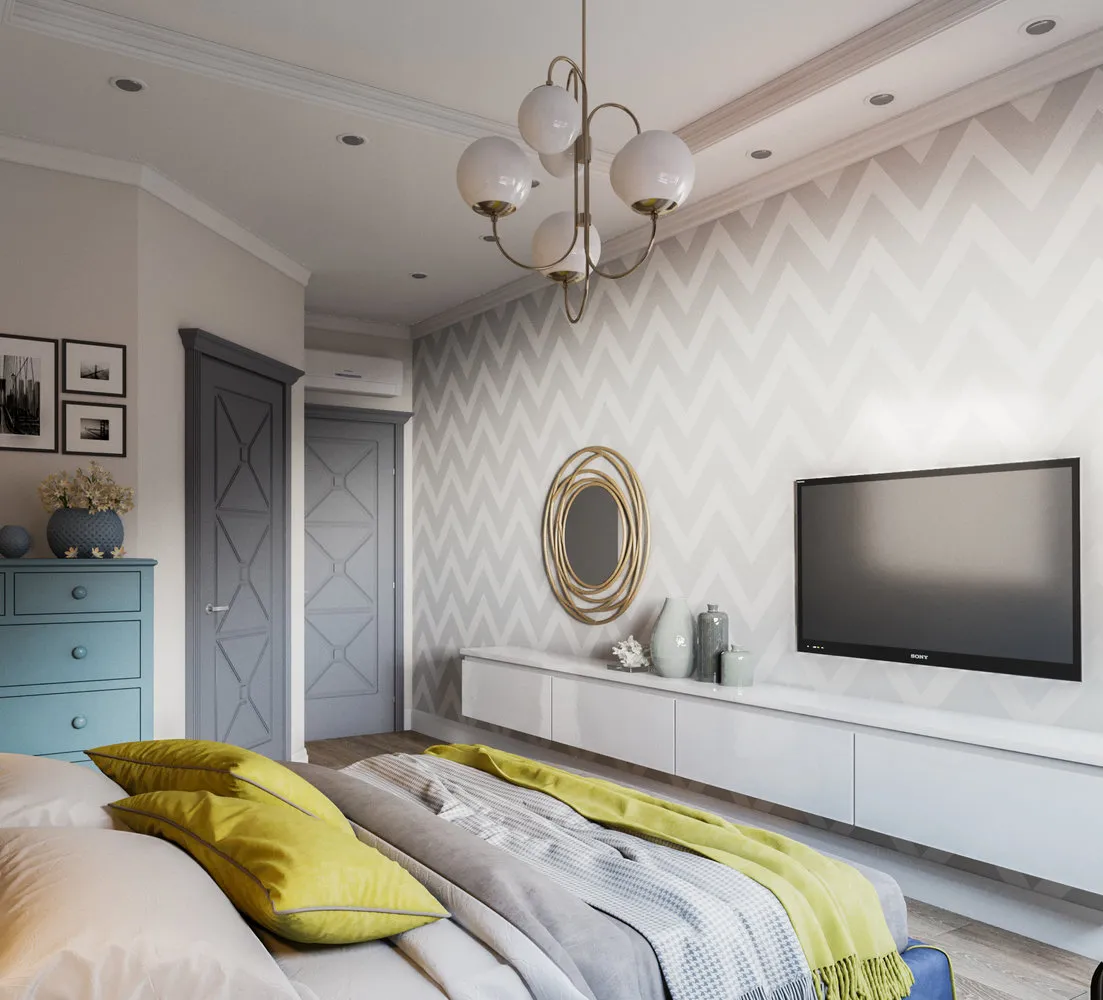 Design: Olga Rogozina
Design: Olga RogozinaBesides price, advantages include: a huge range of products (all popular types are described below), and ease of application — almost anyone can apply wallpapers by themselves, without professional help.
There are several characteristics by which to choose wallpapers. These include moisture resistance and materials.
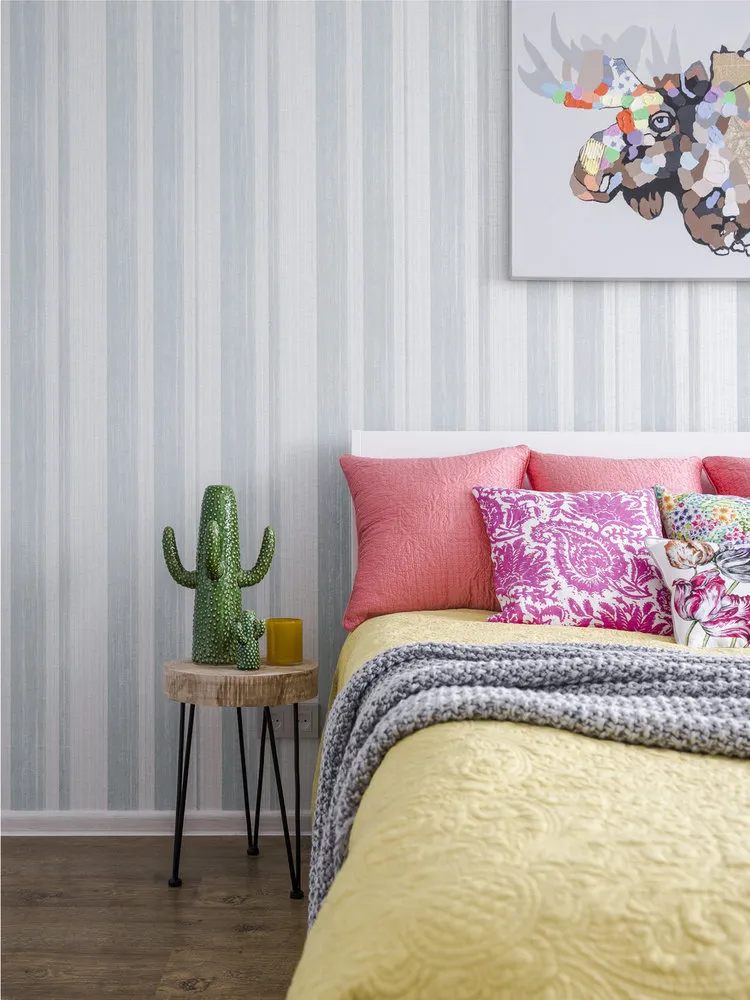 Design: Ekaterina Beljakova and Olga Karayani
Design: Ekaterina Beljakova and Olga KarayaniMoisture Resistance
Standard wallpapers. These are ordinary paper variants, which are absolutely not resistant to moisture, so they are suitable only for living rooms, bedrooms, and hallways. Not kitchens or bathrooms.
Moisture-resistant wallpapers. These wallpapers have a moisture-resistant coating, but this does not mean they can be washed, only easily wiped. Also unsuitable for bathrooms and kitchens.
Washable wallpapers — this is the option sought for rooms with high humidity. They are easily washed with sponges and special cleaning products.
Water-resistant wallpapers — these are wallpapers that have been treated with a surface layer and do not allow moisture to pass through.
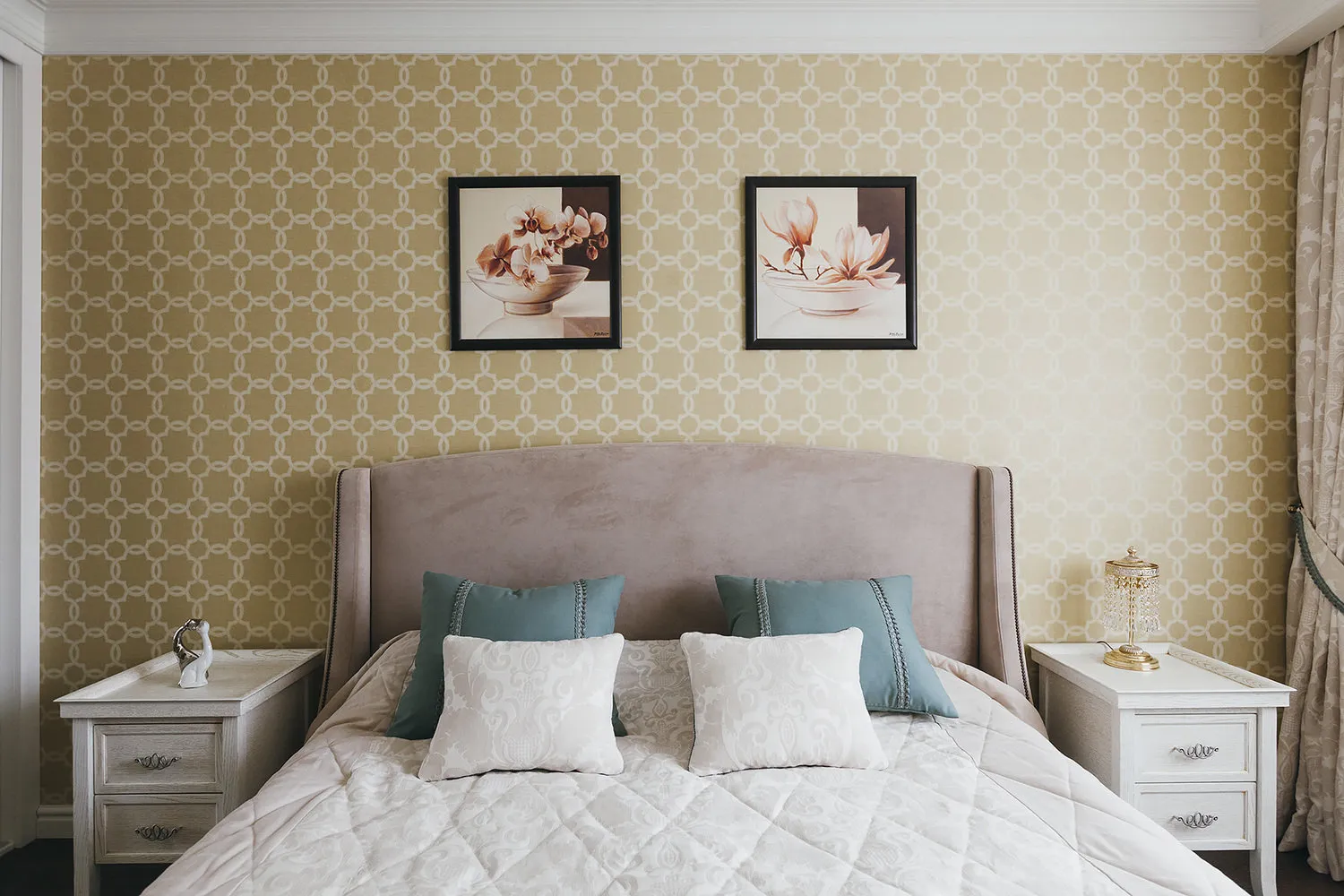 Design: Anna Simonova, Interior Studio
Design: Anna Simonova, Interior StudioMaterial and Textures
- Paper
Paper wallpapers have been on the market for many years, although they have been improved in recent times. Despite the abundance of other options, paper wallpapers are still bought and applied in apartments, houses, and dachas. Their popularity is likely due to their eco-friendliness since paper is a completely natural material. Today, they are produced in dozens of different colors and textures, so even a specialist's eye cannot distinguish between budget and premium options. Wallpapers can be a beautiful option for room finishing.
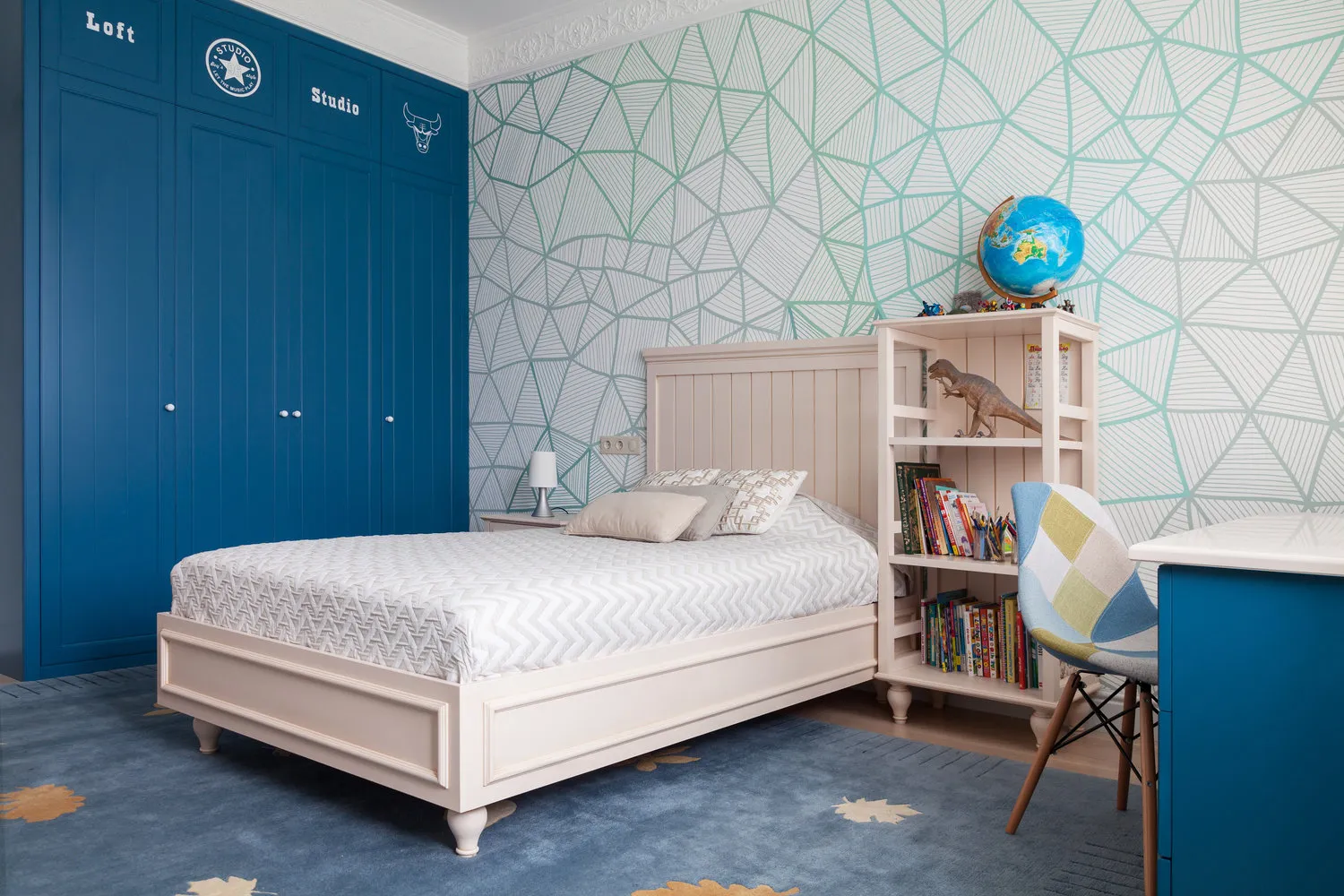 Design: ZE-MOOV HOME Studio
Design: ZE-MOOV HOME StudioThis coating can last up to 10 years, depending on application to the wall. If not done by a professional, the lifespan may be shorter.
Paper wallpapers are often applied under paint, and up to 15 layers of decorative coating can be applied, choosing the desired color or even several colors to match the desired style. Various photo variants of room finishing can provide interesting ideas.
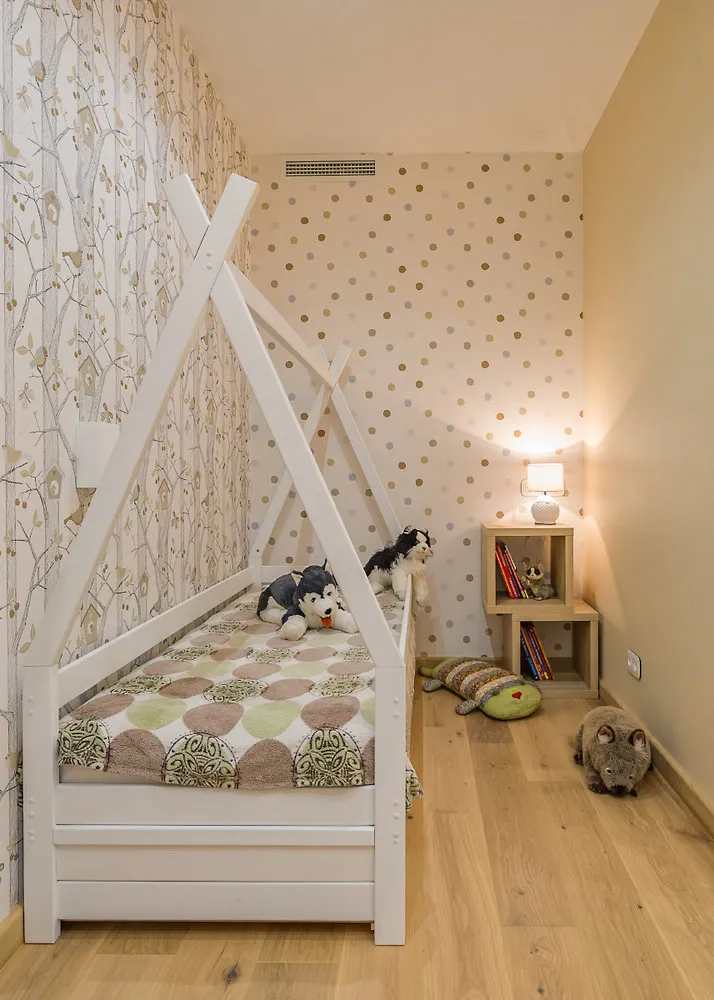 Design: Irina Uzhintseva
Design: Irina Uzhintseva- Felt
Felt is a material made from cellulose. Due to its manufacturing characteristics, felt wallpaper has wear resistance and breathes well, making it a modern way to decorate walls in children's rooms, foyers, and corridors.
An interesting feature of felt wallpapers is that small defects are not visible due to their elasticity. The coating will not tear at corners or crack.
For these reasons, felt coating can also be used in kitchens, thanks to the variety of color palettes, patterns, and textures, it can suit various interiors, styles, and design solutions.
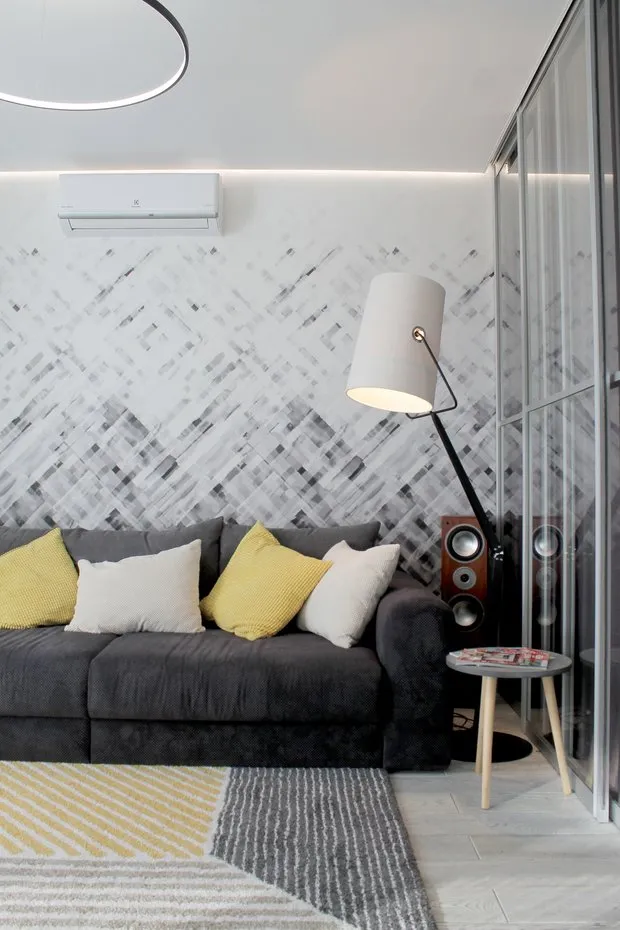
- Wallpaper
Vinyl wall coverings are a relatively new product on the construction market. The base is paper, felt, or textile, and the top layer is made from polyvinyl chloride. Color or relief patterns are applied on top.
Modern wall decoration in an apartment — vinyl wallpapers with silk printing. This term refers to a technique where the top layer is made as if from silk threads, which is reflected in the texture and characteristic shine.
Besides decorative advantages, this wall covering also has resistance to ultraviolet rays, mechanical damage, and water-repellent properties.
There are also drawbacks — vinyl wallpapers are hard to apply by oneself and often require professional help. During application, they emit an unpleasant smell that persists for some time after airing out, so it's not advisable to apply them in children's rooms.
Regarding rooms — vinyl wallpapers can be applied anywhere, and they are used to create fashionable wall decoration in apartments. Various interior photos confirm this.
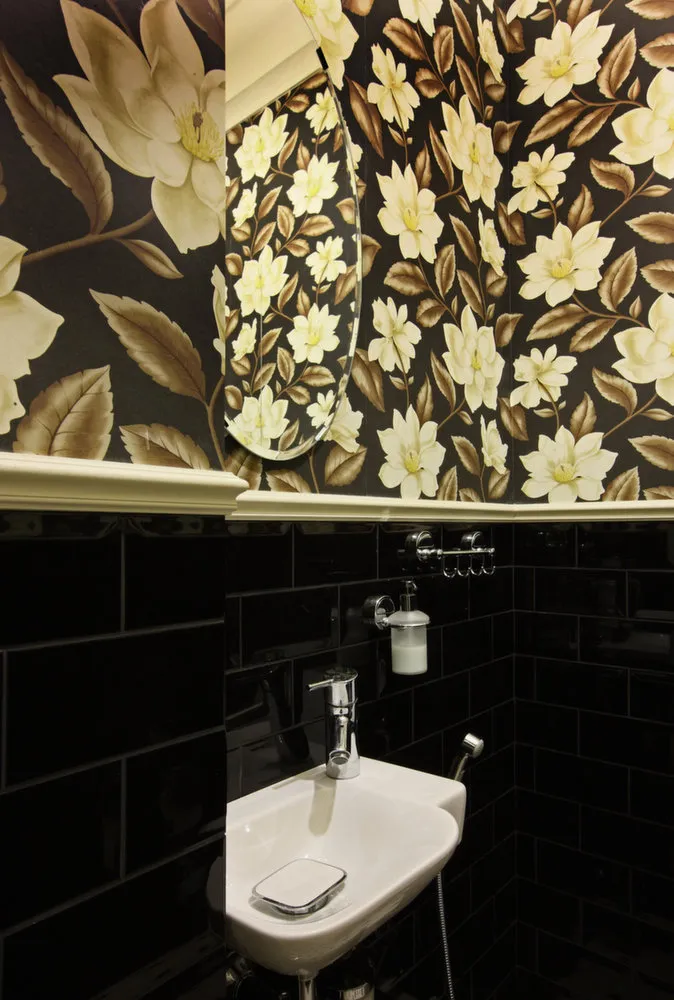 Design: Julia Kharitonova and Natalia Maslova, 3L Decor Bureau
Design: Julia Kharitonova and Natalia Maslova, 3L Decor Bureau- Textile Wallpapers
The base of textile wallpapers consists of paper and felt, and the outer layer is made from natural fiber.
Textile wallpapers have the advantage of absorbing outside noise and retaining heat. Manufacturers treat textile fibers with special substances that increase resistance to sunlight. Of course, the undeniable advantage is the naturalness and eco-friendliness of the materials.
Textile wallpapers are not a cheap product. The cost is high, and taking care of them is quite difficult. Dust accumulates in the fabric, and they also absorb odors. For these reasons, they are usually not applied in children's rooms or kitchens, but very well in living rooms, especially if a beautiful wall finishing is needed in the apartment.
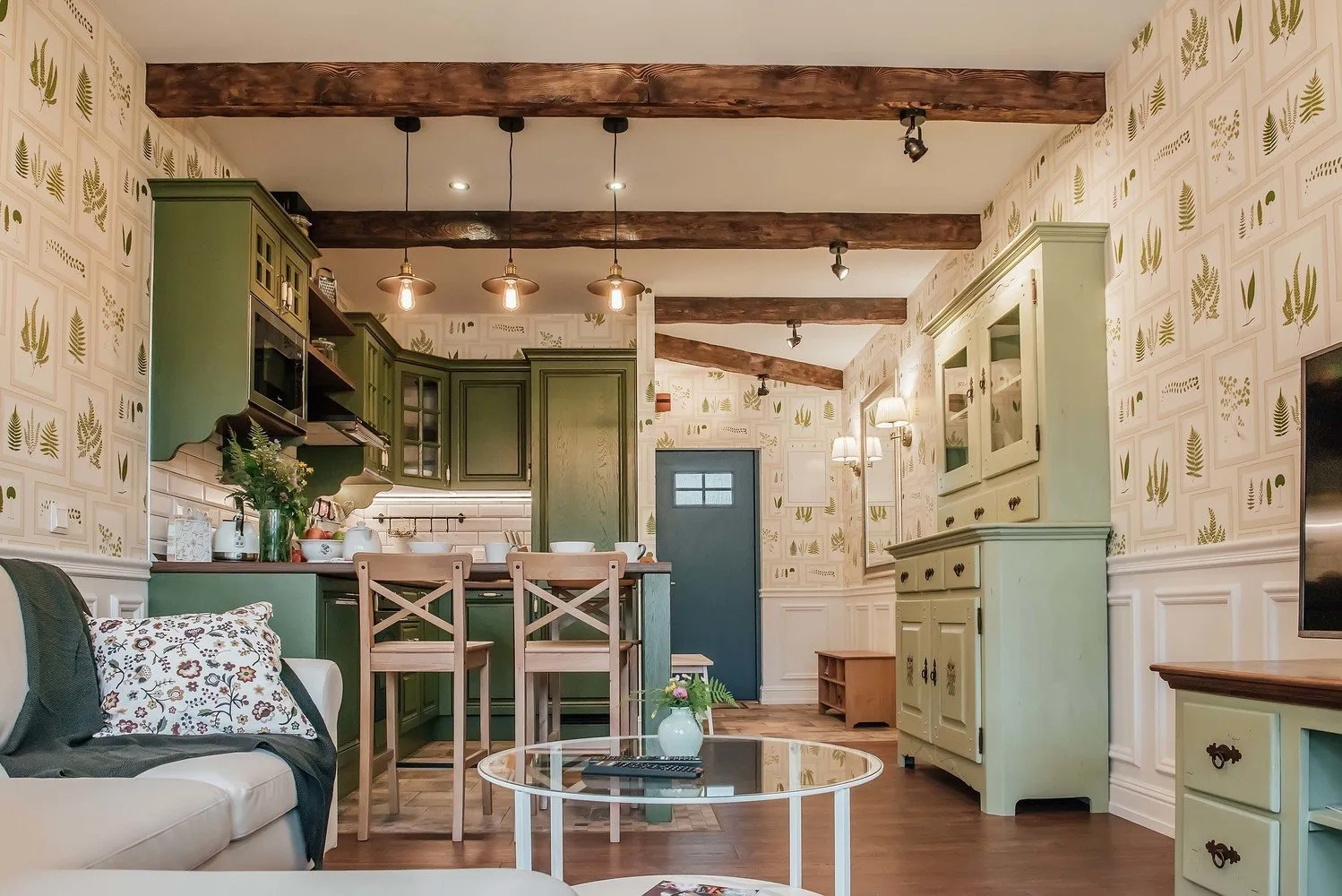
- Photo Wallpapers
They stand out from other options, as the base can be any of the previously mentioned materials. Photo wallpapers can expand and transform a room in ways no other finishing material can. To support the desired stylistic direction or serve as an accessory for modern wall finishing in an apartment, it's enough to paste a picture on the wall.
Photo wallpapers perfectly complement and modernize the interior of bedrooms, living rooms, and interesting and fun ideas can be created for children's rooms, with no limitations in stylistic directions.
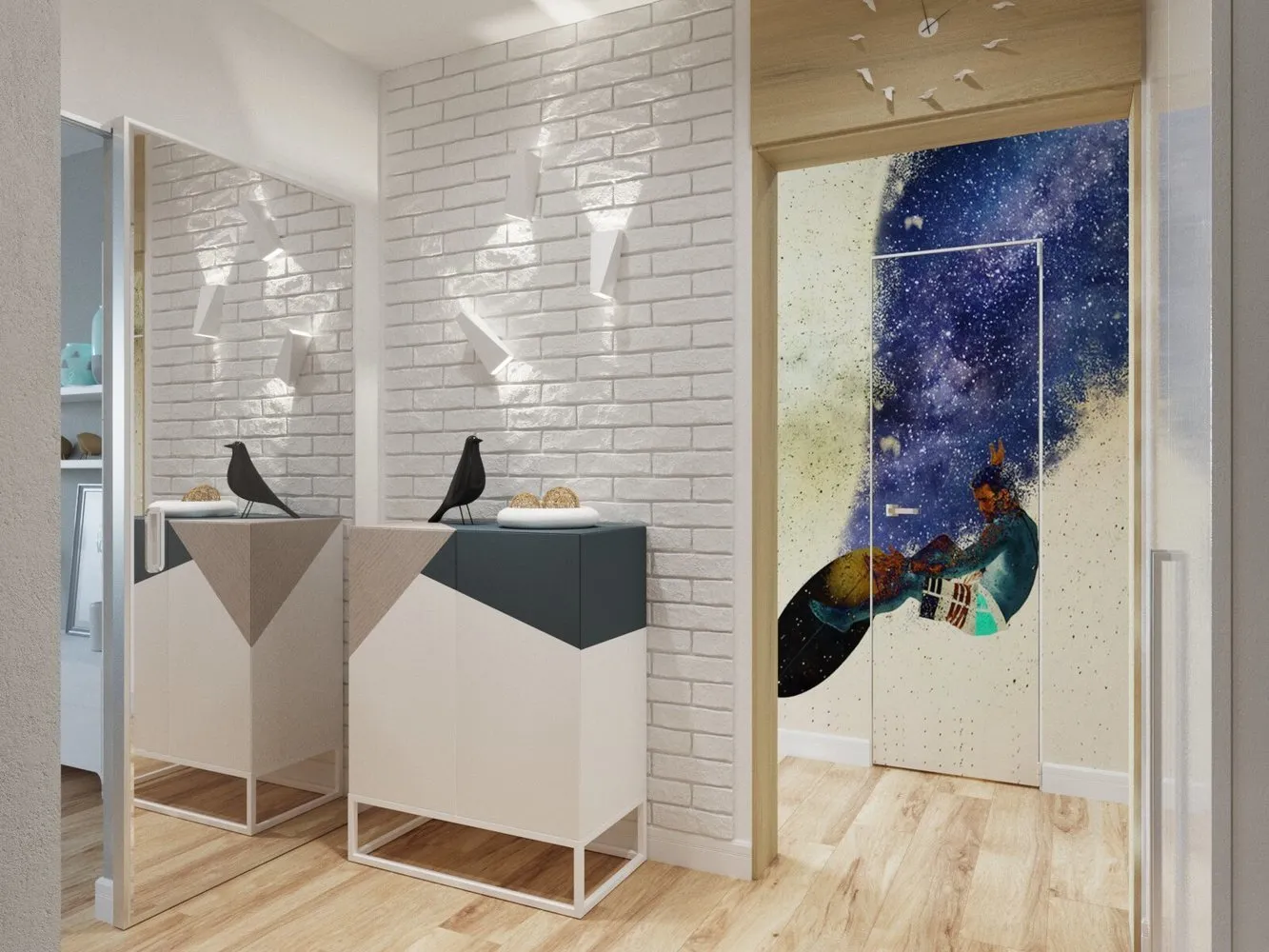 Design: Tatiana Krygina
Design: Tatiana Krygina- Jute
Jute wall covering is made from paper or another textile base. Due to full eco-friendliness, such wallpapers are well suited for living rooms, where a comfortable microclimate can be maintained. Designers might only limit themselves to style — jute won't fit into every interior. The price is quite high, which for some is a significant argument against.
- Glass Fiber
Glass fiber wallpapers are made from eco-friendly raw materials, and manufacturers include natural resources in the composition, such as soda. The material is natural and durable, so these wallpapers can be applied even in humid rooms. Glass fiber resists mold and microbes, and more importantly, they are hypoallergenic. Glass fiber is often prepared for painting to match the interior and desired style of the room.
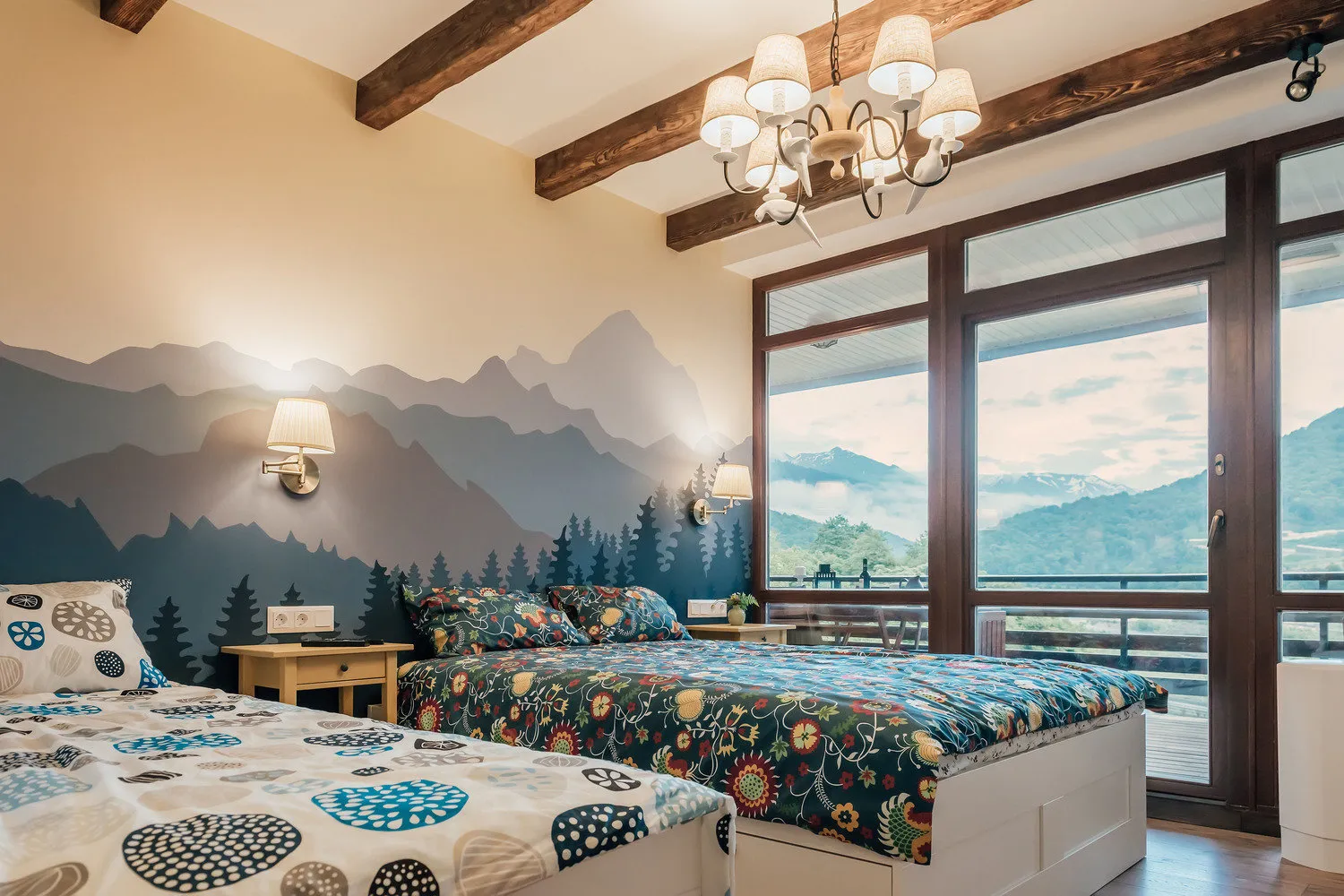
- Cork Wallpapers
This is not only fashionable wall finishing for an apartment, but it also insulates and soundproofs the room. Many are attracted to the naturalness of the material. Additionally, cork has antibacterial properties and resistance to impacts — a nearly perfect option.
The price for these wallpapers is high, but it is undoubtedly justified by their quality. Soft color tones like "ochre" allow these wallpapers to be applied in bedrooms, living rooms, and hallways.
 Design: Evgenia Matveenko, FlatsDesign Architecture Bureau
Design: Evgenia Matveenko, FlatsDesign Architecture Bureau- Paint
Painting is now rarely seen in interior design because it's labor-intensive and often requires a professional's hand for even coating and wall preparation. However, some designers still prefer this method, as it opens up possibilities for fantasy and creativity. We will discuss types and specifics further.
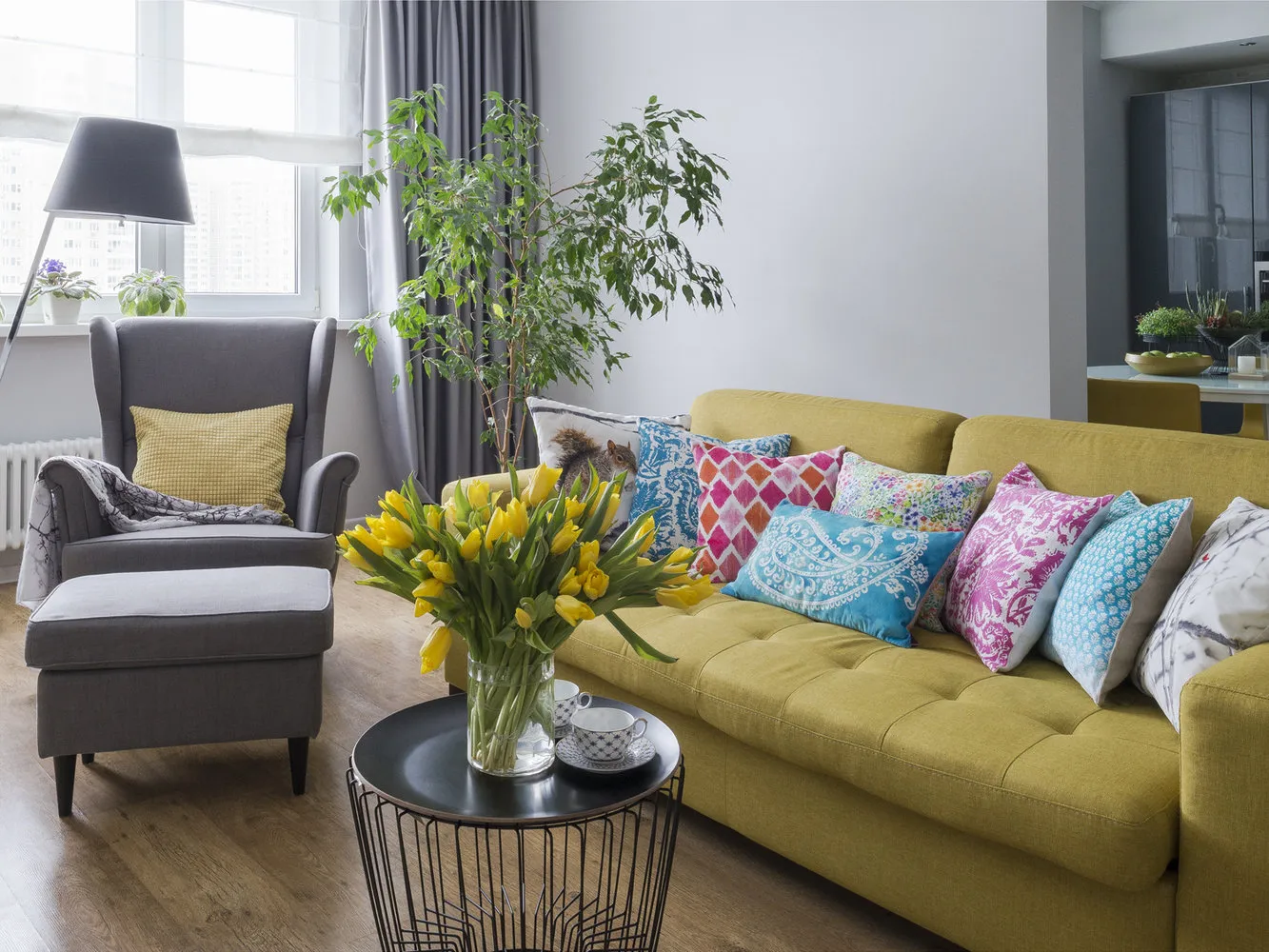 Design: Ekaterina Beljakova and Olga Karayani
Design: Ekaterina Beljakova and Olga Karayani- Water-Emulsion
In essence, these paints are a water solution of the desired color, and the shade is created by adding special pigment.
Water-emulsion paints are economical and practically odorless when applied. Photos of apartment wall finishing prove their popularity among designers.
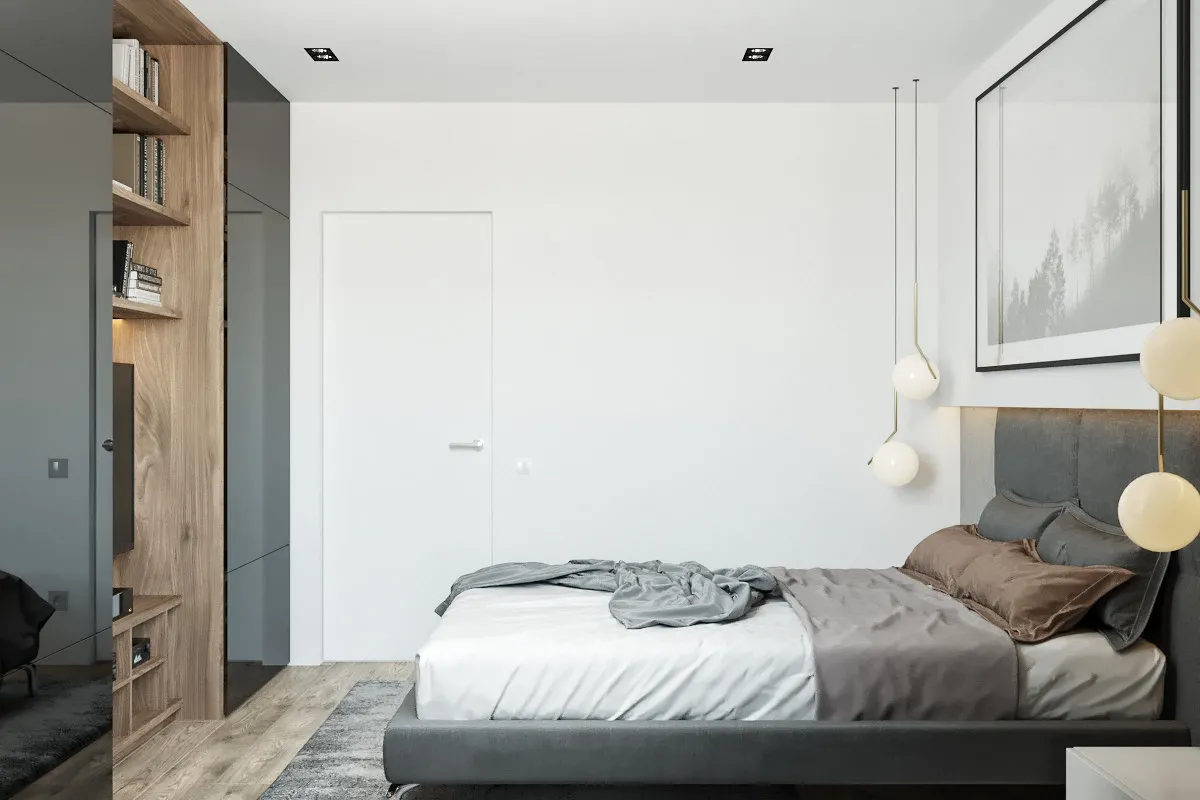 Design: PARA Studio
Design: PARA Studio- Alkyd Paints
The name comes from resins in the composition, which are similar to oil in consistency, but alkyd and oil characteristics differ. The final coating can be matte, glossy, or semi-glossy. Among the advantages, we also note moisture and heat resistance and UV resistance.
 Design: Irina Uzhintseva
Design: Irina Uzhintseva- Silicate Paints
They are made from
More articles:
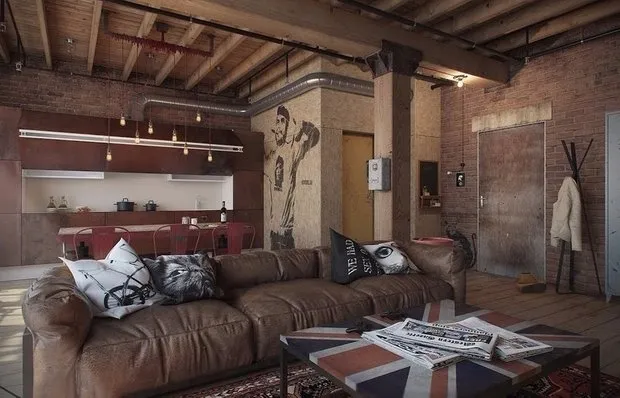 Living Room in Loft Style
Living Room in Loft Style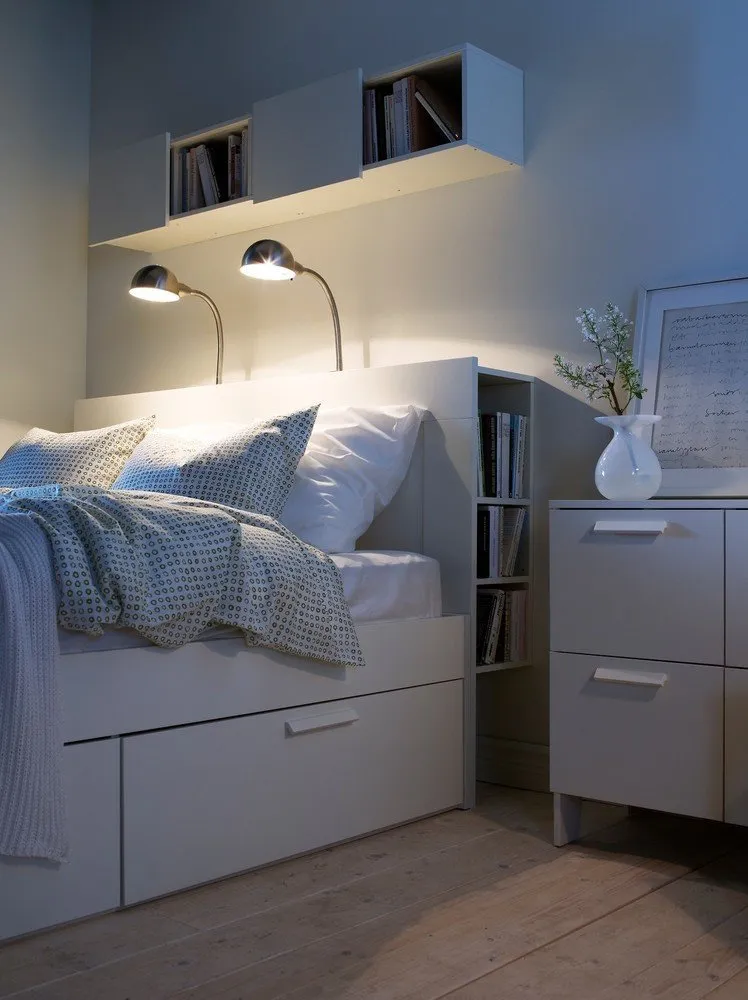 10 IKEA Items That Save Space in Small Apartments
10 IKEA Items That Save Space in Small Apartments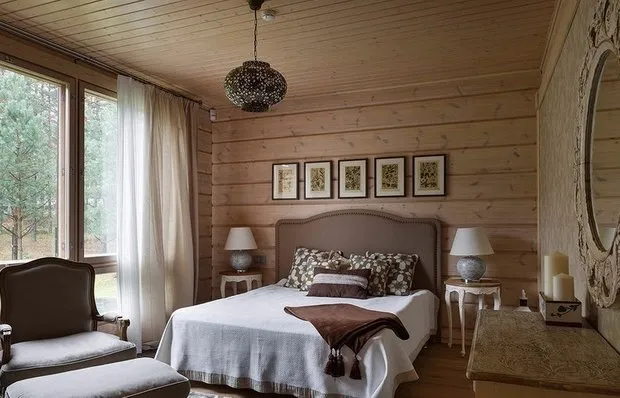 Design of Beautiful Bedrooms in Private Homes: Photo Examples of Interior Decoration
Design of Beautiful Bedrooms in Private Homes: Photo Examples of Interior Decoration DIY Repairs: 15 Things You Can Easily Do Yourself
DIY Repairs: 15 Things You Can Easily Do Yourself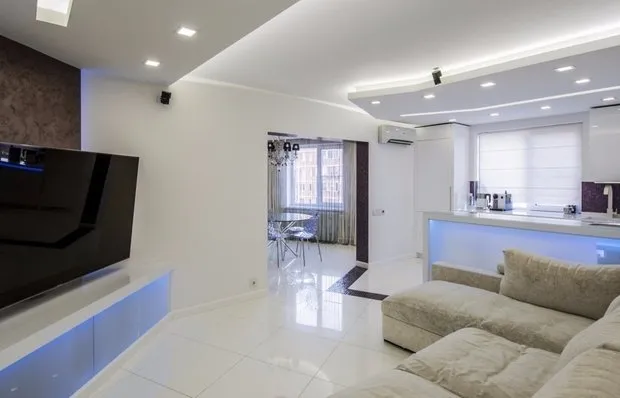 Design of a 40 Square Meter One-Room Apartment with Photos
Design of a 40 Square Meter One-Room Apartment with Photos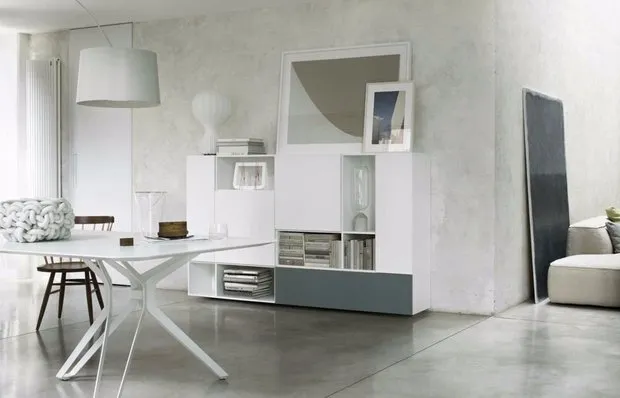 Living Room in Loft Style
Living Room in Loft Style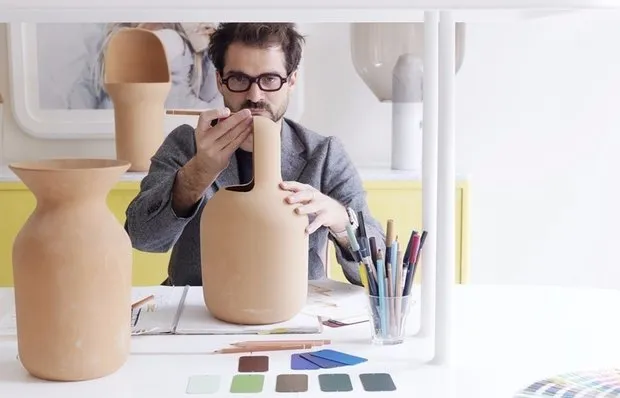 10 Rules of Design by Jaime Hayon
10 Rules of Design by Jaime Hayon Kitchen That Inspires: 10 New Design Solutions
Kitchen That Inspires: 10 New Design Solutions